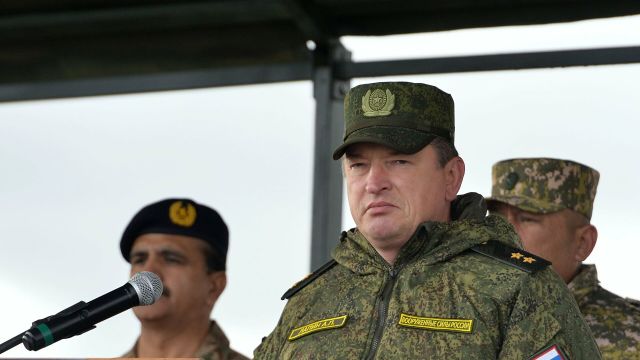The Kharb-Maydon landfill (Tajikistan). October 23. INTERFAX - Large-scale operational and strategic exercises of the collective forces of the Collective Security Treaty Organization (CSTO) "Combat Brotherhood-2021", which ended in Tajikistan, is a response to the aggravation of the situation in Afghanistan, said the commander of the Central Military District (CVO), Colonel-General Alexander Lapin.
"The completed large-scale exercises in Tajikistan with the Collective CSTO Rapid Response Forces have become one of the most important responses to the sharp aggravation of the situation in Afghanistan. The exercises are designed to protect the CSTO member states from any terrorist threat," Lapin stressed on Saturday during the closing ceremony of the exercises.
He noted that the special feature of the maneuvers conducted at the Kharb-Maydon training ground was the use of the latest means of reconnaissance, electronic warfare, communications, logistics and medical support. Thus, during the exercise "Search-2021", an effective intelligence management system was deployed, "which made it possible to reveal the increase in threats in advance and disrupt the plan of the actions of the gangs."
Lapin also said that a single information battlefield was created during the exercises, which ensured the defeat of the enemy in hard-to-reach terrain in real time. For the first time, special training "Echelon-2021" was conducted in a mountainous desert area by the forces and means of the MTO, during which 19 new samples of special equipment were used, which made it possible to reduce the time for preparing units for combat missions by more than three times.
According to the commander of the Central Military District, the central event was the joint operation of collective forces within the framework of the joint exercises "Interaction 2021", where the success of our troops in defeating the invading gangs was ensured by surprise, lightning speed and decisive actions to the full depth of the enemy grouping." Special-purpose groups and helicopter-search assault groups were widely used in the mountains. The actions of the raiding and bypassing detachments were continuously supported by operational-tactical and army aviation.

